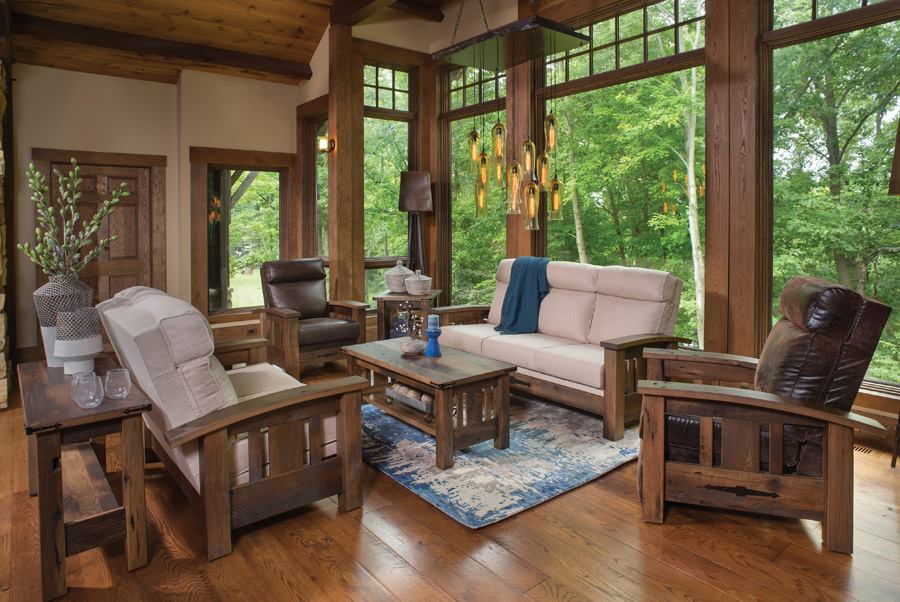Hardwood furniture is a sound investment for anyone looking for durability and sustainability when furnishing their home. Amish furniture, in particular, is a popular choice due to its longevity for being built for functionality first and decoration second. When shopping around it’s good to keep in mind the type of wood your furniture is crafted from since no two pieces are exactly alike.
Hardness/Janka Rating for Amish Furniture
 The hardness of the wood, also called the Janka hardness test, measures the resistance of the wood to wear and denting. The lumber used to make Amish furniture is made of mainly of hardwoods like cherry, maple, beech, pine, northern red oak, and a few others. The Janka rating is typically used to determine whether a species of wood is suitable to be used for flooring and the wood scores on the Janka Rating test if the lumber will be able to withstand wear and tear. The higher the hardness of the wood ranks on the Janka Test, the more durable it will be.
The hardness of the wood, also called the Janka hardness test, measures the resistance of the wood to wear and denting. The lumber used to make Amish furniture is made of mainly of hardwoods like cherry, maple, beech, pine, northern red oak, and a few others. The Janka rating is typically used to determine whether a species of wood is suitable to be used for flooring and the wood scores on the Janka Rating test if the lumber will be able to withstand wear and tear. The higher the hardness of the wood ranks on the Janka Test, the more durable it will be.
Cherry wood, for example, is popular for its warmth and rich colors and will continue to darken when exposed to heat and light. This lumber only has a 950 Janka rating while Oak scores 1290 on the same scale. The resilience and strength of the Amish furniture will depend heavily on the type of wood used to construct it and the type of wear and tear it will be able to withstand over time.
Grain
Wood grain is mentioned consistently for Amish furniture for sale, but many people are unfamiliar what it means in reference to woodworking. The grain of the wood is one of the most important aspects of woodworking and has two basic categories called cross and straight grain. Straight grain is seen to run parallel to the longitudinal axis of a piece of lumber while cross grain will deviate from the axis in two ways by going diagonal or straight.
The type of wood grain Amish furniture for sale has will affect the appearance of the furnishings and add a nice decorative touch. Two types of grain people will often encounter is straight and spiral that deviate in appearance. The straight grain will often be completely straight and may feature grooves in the wood people can feel. Spiral, on the other hand, can go either way often creating natural intricacies in the lumber.
Color
One of the easiest ways to tell the difference between woods in the best Amish furniture is the color and understanding how it can change over time. Cherry wood, for example, is a popular choice due to its rich reddish-brown hue which will darken naturally over time when exposed to light and heat.
Oak is another popular wood with a prominent grain featuring deep grooves in the wood people can feel by brushing their finger across the surface. The pale blond reddish cast is known to oxidize over time and to turn into a deep honey color. Oak is an ideal choice for staining similar to cherry since it enriches the natural coloring of the wood that will only continue to improve with time.
These aspects of wood play a large role in crafting furniture how the end result will turn out. The intricacies of each piece of lumber have its own character and nuances that can make up a truly marvelous piece of furniture.

 (763)498-7730
(763)498-7730 Livechat
Livechat

